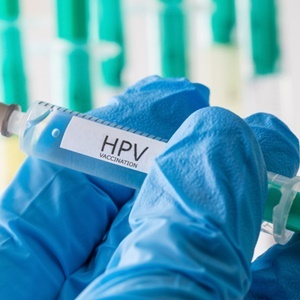
iStock
Cervical cancer is the second most common cancer in women, comprising 16.6% of all cancers in South Africa.
The incidence of cervical cancer in South Africa is high when compared to women in western countries and appears at a younger age. This is because the majority of women in South Africa have not undergone Pap smears to detect precancerous lesions.
It is important to realise that cervical cancer is a largely preventable disease. If the precancerous lesions are detected and removed, they will not be able to develop into cervical cancer in the future. In South Africa, it is unscreened women who are at greatest risk of developing cancer of the cervix and it is estimated that approximately 1 in 26 black South African women will develop cervical cancer.
There are over 100 different types of human papillomaviruses. Some of them (type 6 and 11), which are also sexually transmitted, cause genital warts (condylomata acuminata). Other HPV types (like 16 and 18) are called high-risk viruses because of their increased association with cervical cancer.
Fortunately, most women who are infected with HPV do not develop cervical cancer. For this reason, scientists believe that other factors act together with HPVs. For example, other genital microbes also may play a role. Further research is needed to learn the exact role of viruses and other micro-organisms and how they act together with other factors in the development of cervical cancer.
Smoking increases the risk of cancer of the cervix. Cancer causing chemicals called carcinogens are taken up into the bloodstream and is then concentrated in cervical mucous. These carcinogens act together with other factors like HPV to cause genetic faults in epithelial cells of the cervix. The risk appears to increase with the number of cigarettes a woman smokes each day and with the number of years she has smoked.
Several reports suggest that women whose immune systems are weakened, are more likely than others to develop cervical cancer. For example, women who have the human immunodeficiency virus (HIV), which causes Aids, are at increased risk. Also, organ transplant patients, who receive drugs that suppress the immune system to prevent rejection of the new organ, are more likely than others to develop pre-cancerous lesions and cancer.
(Reviewed by Professor Lynette Denny, Gynaecology Oncology Unit, Department Obstetrics & Gynaecology, University of Cape Town/Groote Schuur Hospital)
The incidence of cervical cancer in South Africa is high when compared to women in western countries and appears at a younger age. This is because the majority of women in South Africa have not undergone Pap smears to detect precancerous lesions.
It is important to realise that cervical cancer is a largely preventable disease. If the precancerous lesions are detected and removed, they will not be able to develop into cervical cancer in the future. In South Africa, it is unscreened women who are at greatest risk of developing cancer of the cervix and it is estimated that approximately 1 in 26 black South African women will develop cervical cancer.
There are over 100 different types of human papillomaviruses. Some of them (type 6 and 11), which are also sexually transmitted, cause genital warts (condylomata acuminata). Other HPV types (like 16 and 18) are called high-risk viruses because of their increased association with cervical cancer.
Fortunately, most women who are infected with HPV do not develop cervical cancer. For this reason, scientists believe that other factors act together with HPVs. For example, other genital microbes also may play a role. Further research is needed to learn the exact role of viruses and other micro-organisms and how they act together with other factors in the development of cervical cancer.
Smoking increases the risk of cancer of the cervix. Cancer causing chemicals called carcinogens are taken up into the bloodstream and is then concentrated in cervical mucous. These carcinogens act together with other factors like HPV to cause genetic faults in epithelial cells of the cervix. The risk appears to increase with the number of cigarettes a woman smokes each day and with the number of years she has smoked.
Several reports suggest that women whose immune systems are weakened, are more likely than others to develop cervical cancer. For example, women who have the human immunodeficiency virus (HIV), which causes Aids, are at increased risk. Also, organ transplant patients, who receive drugs that suppress the immune system to prevent rejection of the new organ, are more likely than others to develop pre-cancerous lesions and cancer.
(Reviewed by Professor Lynette Denny, Gynaecology Oncology Unit, Department Obstetrics & Gynaecology, University of Cape Town/Groote Schuur Hospital)




 Publications
Publications
 Partners
Partners












